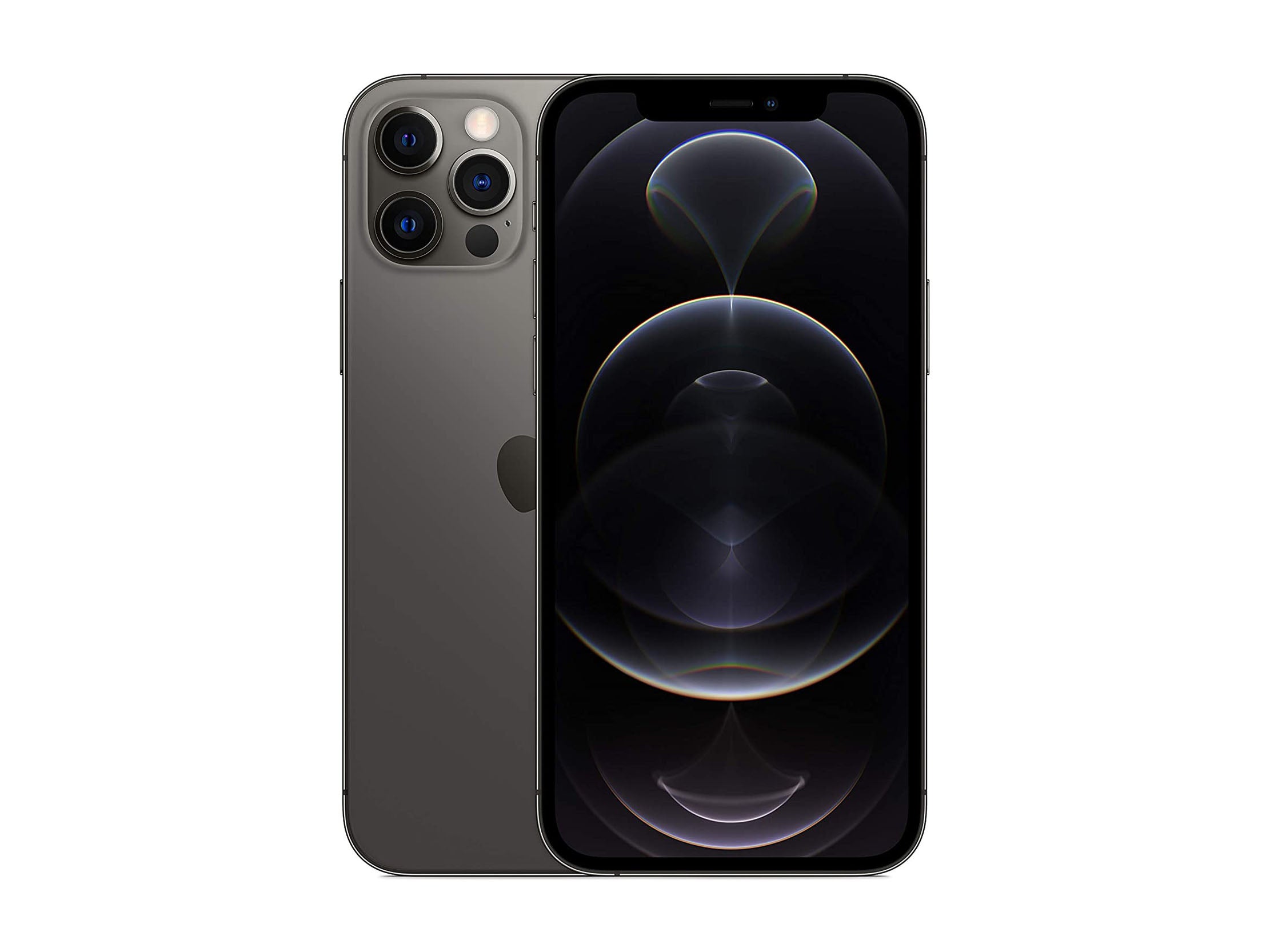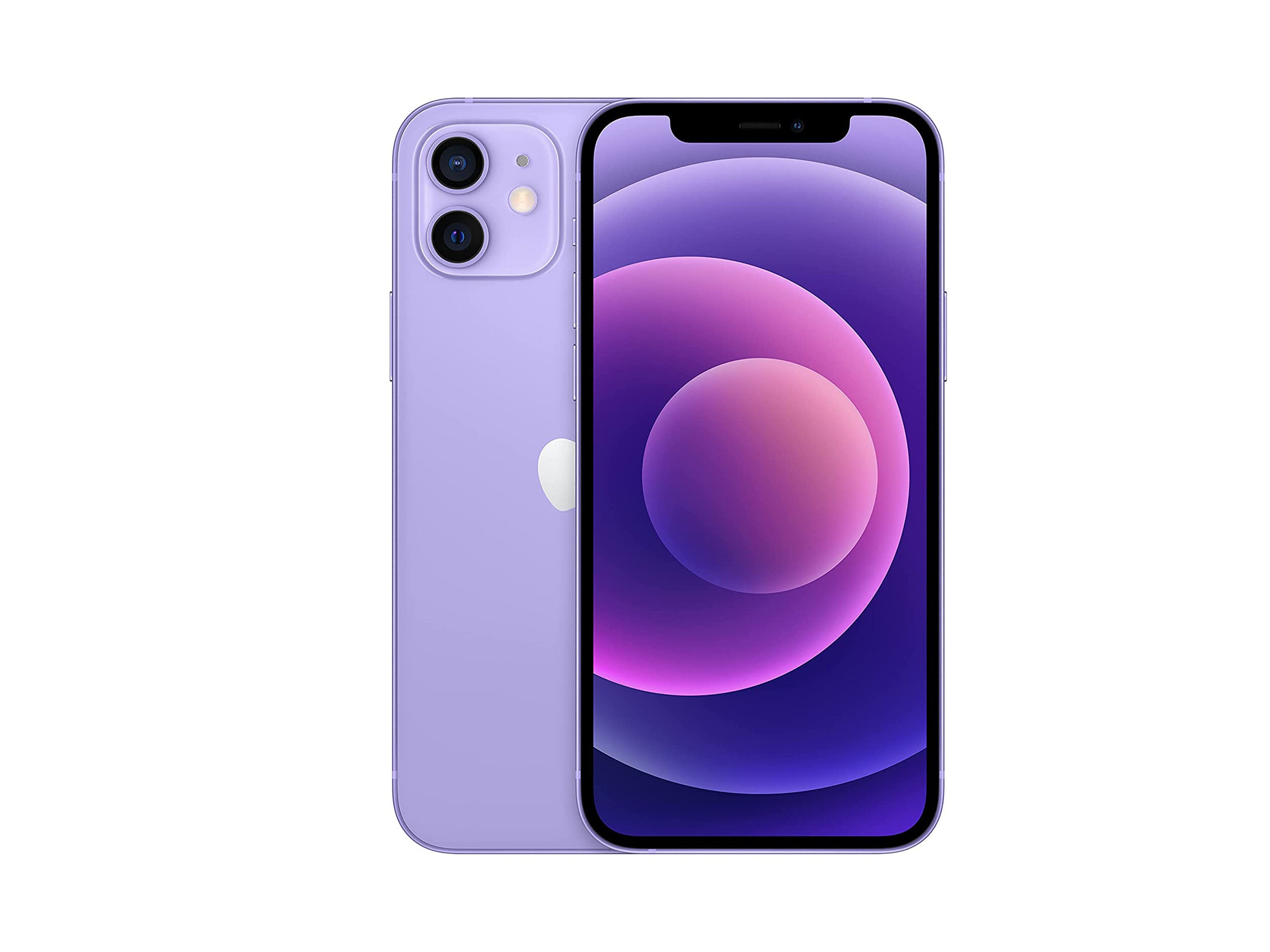
The Independent's journalism is supported by our readers. When you purchase through links on our site, we may earn commission. Why trust us?
iPhone 12 pro vs iPhone 12: Is the regular model good enough?
We compare their design, display, battery life, performance, price and more

It’s wild to think that it’s been seven months since Tim Cook first stood on stage in California and introduced to the world the company’s latest line-up of smartphones, declaring that day in October a new beginning for the iPhone.
A new beginning because the iPhone 12, iPhone 12 pro, iPhone 12 mini and iPhone 12 pro max were the first ever iPhone devices to have 5G connectivity, something that the company continued to shout enthusiastically about over the course of the event.
But for us, the exciting thing wasn’t that 5G had finally come to the iPhone – it had been rumoured and leaked months before. No, it was how shockingly similar the iPhone 12 and iPhone 12 pro were in terms of specs and design. There are usually major differences between the two flagship devices – but this time, it was all change.
The iPhone 12 isn’t the only shiny new thing Apple has launched since its keynote event. Since then, it’s released the AirTag – a competitor to the Tile item tracker; a new iMac and a new iPad pro. But we’re here to discuss whether the iPhone 12 is good enough, or whether the 12 pro is better.
Without further ado, here’s our comparison of the two different iPhone 12 models. Do you really need the handful of extras that the iPhone 12 provides? Read on below and we’ll break it down for you.
Read more:
You can trust our independent reviews. We may earn commission from some of the retailers, but we never allow this to influence selections, which are formed from real-world testing and expert advice. This revenue helps to fund journalism across The Independent.
iPhone 12 pro

Buy now from £999, Apple.com
Size: 5.78in x 2.82in x 0.29in
Weight: 189g
Connectivity: 5G
Display: 6.1in OLED (2532 x 1170)
Rear camera: 12-megapixel wide (f/1.6), 12-megapixel ultra-wide (f/2.4), 12-megapixel telephoto (f/2.0)
Front-facing camera: 12-megapixel TrueDepth (f/2.2)
CPU: A14 Bionic chip
Storage: 128GB, 256GB, 512GB
Battery: 2,815mAh
Water resistance: IP68 dust/water resistant (up to 6m for 30 minutes)
Colours: Pacific blue, graphite, gold, silver
Price: £999/£1,099/£1,299
Let’s start with the more expensive iPhone 12 pro model. The pro features a lovely new flat-edge design, harking back to the iPhone 4 and iPhone 5 days. There’s an edge-to-edge 6.1in OLED display and a notch for the phone’s sensors.
The iPhone 12 pro display is made with Apple’s ceramic shield glass technology, offering four times better drop protection than the iPhone 11 pro, and it also has Apple’s TrueTone technology. Sadly, it only has a 60Hz refresh rate instead of the rumoured 120Hz, so it’s not buttery smooth like the Galaxy S21 Ultra. The iPhone 12 pro has an IP68 rating, meaning you can dunk it in six metres of water for a maximum of 30 minutes.
We’re big fans of the sleek stainless steel finish – which, along with the colour differences, is really the only difference between the design of the iPhone 12 pro and the iPhone 12, which features an aluminium design. This does add a little more heft to the iPhone 12 pro compared to the iPhone 12, but side by side, you won’t notice any difference at all. The iPhone comes in more premium colours, like pacific blue, graphite, gold and silver.
In terms of specifications, the iPhone 12 pro runs on Apple’s snappy A14 Bionic chip and features a 16-core neural engine, offering up an 80 per cent performance boost over its predecessor. All of this just made the iPhone 12 pro feel really speedy when using it. Another distinction between the iPhone 12 pro and the 12 is that the 12 pro has 6GB of RAM, compared to the iPhone 12’s 4GB. This will make a negligible difference if you’re big on mobile gaming.
As for the battery, well, it’s slightly less good than the iPhone 11 pro, featuring a smaller 2,815mAh battery, but it will still last you most of the day before needing a recharge, plus it has fast charging. Inside the back panel is an array of magnets for Apple’s fancy new MagSafe feature, which allows you to stick on a bunch of accessories and charge via the back. It can only charge at a speed of 15W, however, which we found was a lot slower than just plugging it into the bottom.
The differences between the two phones really only become apparent when we start looking at the cameras. The iPhone 12 pro has one of the best camera systems on any current smartphone. It has a 12-megapixel wide lens, an ultra-wide lens and a telephoto lens for two varying angles. The big camera feature on the pro is the LiDAR scanner for depth sensing, something that really highlights Apple’s push into the AR space, but it also helps to improve low light photography.
On top of that, the iPhone 12 pro also has a night mode, so the photos we took always remained bright in the dark – even when zoomed in using the telephoto lens. The iPhone 12 pro can also take ProRAW photos. If you don’t know what that is, you probably don’t need an iPhone 12 Pro. In all seriousness, it essentially preserves the raw file format in combination with Apple’s image processing. Lastly, with the iPhone 12 Pro, you can record in Dolby Vision, boosting the dynamic range of whatever you film to 4K and 60 frames per second. These are future-proofing features that the standard iPhone 12 doesn’t have.
You can get the iPhone 12 pro in three different storage amounts – 128GB, 256GB or 512GB, which are larger storage sizes than the iPhone 12. The iPhone 12 pro base model starts at £999.
iPhone 12

Buy now from £799, Apple.com
Size: 5.78in x 2.82in x 0.29in
Weight: 164g
Connectivity: 5G
Display: 6.1in OLED (2532 x 1170)
Rear camera: 12-megapixel wide lens (f/1.6), 12-megapixel ultra-wide f/2.4)
Front-facing camera: 12-megapixel TrueDepth (f/2.2)
CPU: A14 Bionic chip
Storage: 64GB, 128GB, 256GB
Battery: 2,815mAh
Water resistance: IP68 dust/water resistant (up to 6m for 30 minutes)
Colours: Black, white, product red, green, blue, purple
Price: £799/£849/£949
With everything we said about the iPhone 12 above, you might be thinking – is there actually much difference between the two? After testing the iPhone 12 pro, we turned our attention to the iPhone 12 and struggled to find any major differences between them.
First of all, the iPhone 12 has a flat-edge design – same as the iPhone 12 pro, as well as the same 6.1in OLED screen, the same smaller notch for the sensors and the same Ceramic Shield glass protecting the display. When viewed from the front, the iPhone 12 looks exactly the same as the iPhone 12 pro.
There’s an aluminium chassis, unlike the iPhone 12 pro’s stainless steel, meaning it’s very slightly lighter than the pro. The 12 also comes in some livelier colours, than the more sombre tones of the pricier version – there’s a new purple shade, as well as black, white, blue, product red and green. Unsurprisingly, there’s no 120Hz display, featuring only a 60Hz refresh rate, but it does have the same IP68 rating as the iPhone 12 pro.
Performance and specs-wise, the iPhone 12 is practically the same as the pro in every way bar one. It runs on that stellar A14 Bionic chip and has the same 16-core neural engine. And despite only having 4GB of RAM compared to the iPhone 12 pro’s 6GB, we didn’t notice any degradation in speed or performance.
The 12 was just as fast as the pro. The iPhone 12 even has the same 12,815mAh battery as the iPhone 12 pro and the same magnet array, allowing you to wirelessly charge your iPhone and attach various MagSafe accessories to the back of it. So what sets it apart? Mainly the camera system.
Unlike the iPhone 12 pro’s triple camera system, the 12 only has dual cameras, just like the iPhone 11. You have a wide-angle lens and an ultra-wide angle lens, but this time it has night mode on both the front-facing and the rear cameras. Sadly, there’s no telephoto lens, LiDAR scanner, ProRAW support or Dolby Vision, but if you’re just using the iPhone 12 cameras for everyday use, then the 12-megapixel dual cameras are more than good – they’re great. Plus you get the same 12-megapixel TrueDepth camera on the front.
The other key difference is storage size. The iPhone base iPhone 12 is only 64GB – barely enough for modern use, meaning most people will either go for the 128GB model or the 256GB model. If you opt for the highest amount, you might as well get the 12 pro as they end up becoming similar in price. The iPhone 12 starts at £799 for the base 64GB model.
The verdict: iPhone 12 pro vs iPhone 12
We had such similar experiences using the two phones that it felt like we were writing the exact same review twice. And that’s the really nice thing about the iPhone 12 and iPhone 12 pro.
Apple has really closed the gap between the two devices, making the decision between the two both easier and harder. If you want the advanced camera system, with the LiDAR scanner and the telephoto lens, go for the iPhone 12 pro. If you prefer more sophisticated colours, go for the iPhone 12 pro. If none of that matters to you, go for the iPhone 12. It’s cheaper, performs the same, looks the same, has the same display, has the same 5G connectivity and weighs less.
The only downside might be that it has less RAM, and that the storage tops out at 256GB. They’re both brilliant phones – the only decision you have to make is whether you want that better camera system and whether the price demands it.
Tariff comparison
For the latest offers on mobile phone contracts, try the links below:
For more, why not check out our roundup of the best budget smartphones of 2021?